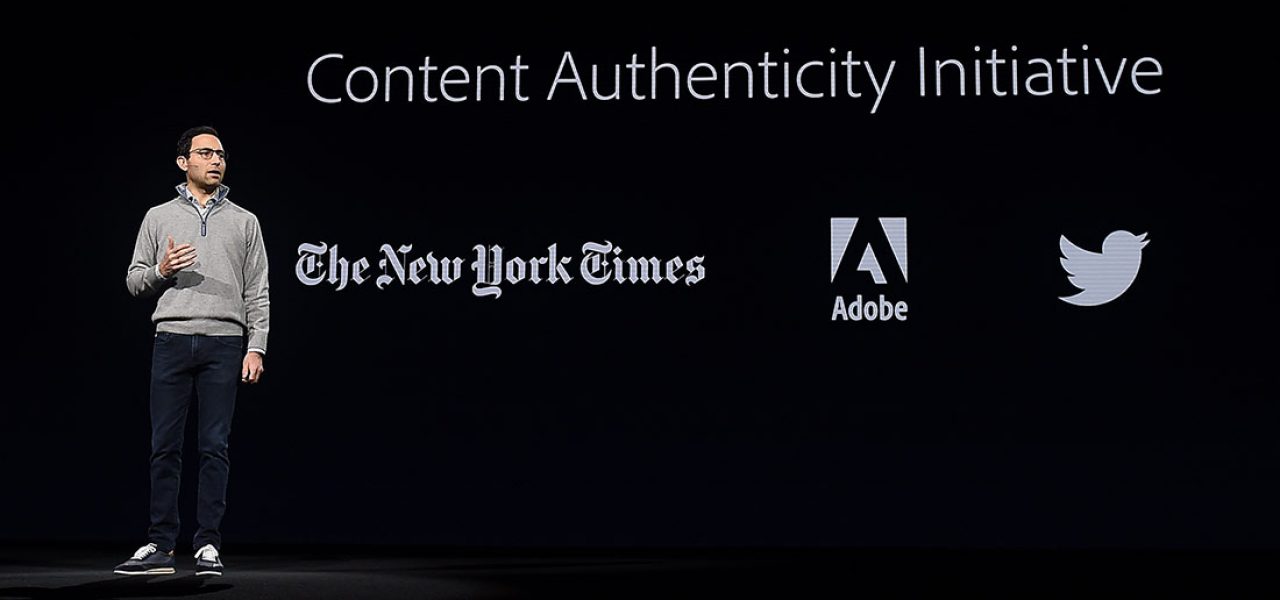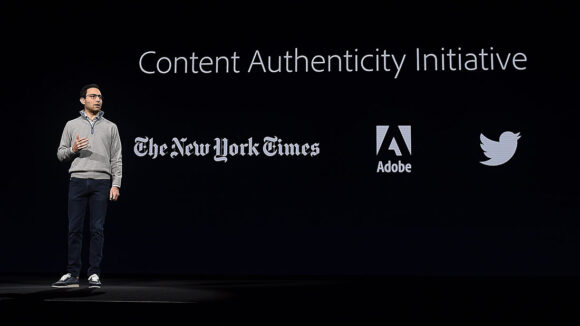

Adobe Developing New System That Could Protect Artists From Having Their Work Stolen Online
Of all the products and plans announced at this year’s edition of Adobe Max, the company’s annual design conference currently running Los Angeles, one caught our eye for the potential impact it could have on the creative community: the Content Authenticity Initiative (CAI). Here’s a look at what the CAI is and how it could benefit the visual arts community:
What is the Content Authenticity Initiative?
A new technical solution that will make it easier for people to trace the sources of visual content. Adobe says that it aims to create a new industry standard for digital content attribution. The company has launched the project in collaboration with Twitter and The New York Times.
Why is it needed?
To quote Adobe’s recent blog post: “With the volume of digital content increasing, people want to know that what they’re seeing online is authentic. Yet, currently there’s a lack of transparency.”
In an age when photos and videos are easily modified, or often distributed out of context, internet users can be misled. By identifying the original creators of a piece of content, the CAI is joining the fight against fake news. But it could also benefit people in creative industries.
How might artists benefit?
All too often, an artist will upload something they’ve made, only to watch in dismay as it is widely shared across social media without attribution. The CAI will give them the choice to permanently tag their content, and set the ways in which it can be altered. In theory, this will discourage sharing and modification without permission.
Adobe’s products are deeply embedded in the creative community. This is the company responsible for developing PDF files and mainstreaming Flash, among other things. An attribution tool with its backing could have a real impact.
How will the CAI actually work?
That’s the question. At the conference, The Verge saw a demonstration of the tool in Photoshop, and reported that it looks like a piece of metadata that attaches to the file.
Adobe has confirmed that the CAI will be opt-in, and says that its technical team is “exploring a high-level framework architecture based on our vision of attribution.” It hasn’t announced much more than that.
What could go wrong?
With details so scarce, it isn’t clear how Adobe will secure the system. If the tool consists of metadata, the company will have to ensure that people can’t just strip it out.
On the other hand, if the CAI imposes tight controls, this can bring its own set of frustrations for those who are trying to use the content legitimately.
When will we know more?
The CAI will be formally launched at a summit in the coming months. In the meantime, Adobe is inviting other companies to commit to integrating the tool within their products. The more do so, the more effective it will be.
Photo at top courtesy of Adobe. Scott Belsky, Adobe chief product officer, announces the Content Authenticity Initiative at Adobe MAX on Nov. 4, 2019.

.png)